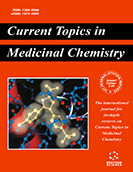Abstract
Tissue engineering approaches that combine biomaterial-based scaffolds with protein delivery systems have provided a potential strategy for improved regeneration of damaged tissue. The success of polymeric scaffolds is determined by the response it elicits from the surrounding biological environment. This response is governed, to a large extent, by the surface properties of the scaffold. Surfaces of polymeric scaffolds have a significant effect on protein and cell attachment. Multiple approaches have been developed to provide micrometer to nanometer scale alterations in surface architecture of scaffolds to enable improved protein and cell interactions. Chemical modification of polymeric scaffold surfaces is one of the upcoming approaches that enables enhanced biocompatibility while providing a delivery vehicle for proteins. Similarly, physical adsorption, radiation mediated modifications, grafting, and protein modifications are other methods that have been employed successfully for alterations of surface properties of polymeric scaffolds. The goal of this review is to provide an overview of the role of surface properties /chemistry in tissue engineering and briefly discuss some of the methods of surface modification that can provide improved cell and protein interactions. It is hoped that these improved polymeric scaffolds will lead to accelerated and functional tissue regeneration.
Keywords: Tissue engineering, biomaterial, growth factor, protein immobilization, biocompatibility, surface modification, protein delivery systems
Current Topics in Medicinal Chemistry
Title: Improved Biomaterials for Tissue Engineering Applications: Surface Modification of Polymers
Volume: 8 Issue: 4
Author(s): Dhirendra S. Katti, Rajesh Vasita and Kirubanandan Shanmugam
Affiliation:
Keywords: Tissue engineering, biomaterial, growth factor, protein immobilization, biocompatibility, surface modification, protein delivery systems
Abstract: Tissue engineering approaches that combine biomaterial-based scaffolds with protein delivery systems have provided a potential strategy for improved regeneration of damaged tissue. The success of polymeric scaffolds is determined by the response it elicits from the surrounding biological environment. This response is governed, to a large extent, by the surface properties of the scaffold. Surfaces of polymeric scaffolds have a significant effect on protein and cell attachment. Multiple approaches have been developed to provide micrometer to nanometer scale alterations in surface architecture of scaffolds to enable improved protein and cell interactions. Chemical modification of polymeric scaffold surfaces is one of the upcoming approaches that enables enhanced biocompatibility while providing a delivery vehicle for proteins. Similarly, physical adsorption, radiation mediated modifications, grafting, and protein modifications are other methods that have been employed successfully for alterations of surface properties of polymeric scaffolds. The goal of this review is to provide an overview of the role of surface properties /chemistry in tissue engineering and briefly discuss some of the methods of surface modification that can provide improved cell and protein interactions. It is hoped that these improved polymeric scaffolds will lead to accelerated and functional tissue regeneration.
Export Options
About this article
Cite this article as:
Katti S. Dhirendra, Vasita Rajesh and Shanmugam Kirubanandan, Improved Biomaterials for Tissue Engineering Applications: Surface Modification of Polymers, Current Topics in Medicinal Chemistry 2008; 8 (4) . https://dx.doi.org/10.2174/156802608783790893
| DOI https://dx.doi.org/10.2174/156802608783790893 |
Print ISSN 1568-0266 |
| Publisher Name Bentham Science Publisher |
Online ISSN 1873-4294 |
 27
27
- Author Guidelines
- Bentham Author Support Services (BASS)
- Graphical Abstracts
- Fabricating and Stating False Information
- Research Misconduct
- Post Publication Discussions and Corrections
- Publishing Ethics and Rectitude
- Increase Visibility of Your Article
- Archiving Policies
- Peer Review Workflow
- Order Your Article Before Print
- Promote Your Article
- Manuscript Transfer Facility
- Editorial Policies
- Allegations from Whistleblowers
- Announcements
Related Articles
-
T-Lymphocytes: A Target for Stimulatory and Inhibitory Effects of Zinc Ions
Endocrine, Metabolic & Immune Disorders - Drug Targets Molecular Targets, Anti-cancer Properties and Potency of Synthetic Indole-3-carbinol Derivatives
Mini-Reviews in Medicinal Chemistry Neurobiology of Alzheimer’s Disease: Integrated Molecular, Physiological, Anatomical, Biomarker, and Cognitive Dimensions
Current Alzheimer Research Radix Astragali (Astragalus): Latest Advancements and Trends in Chemistry, Analysis, Pharmacology and Pharmacokinetics
Current Organic Chemistry Muscle Metabolism and Exercise Capacity in Cachexia
Current Pharmaceutical Design Gender Dysphoria, Eating Disorders and Body Image: An Overview
Endocrine, Metabolic & Immune Disorders - Drug Targets Pharmacological Options for Treatment of Hyperandrogenic Disorders
Mini-Reviews in Medicinal Chemistry Patient, System and Clinician Level Interventions to Address Disparities in Diabetes Care
Current Diabetes Reviews Peroxisome Proliferator-Activated Receptor (PPAR) in Metabolic Syndrome and Type 2 Diabetes Mellitus
Current Diabetes Reviews Importance of Pharmacology Knowledge by Dieticians
Current Nutrition & Food Science Antipsychotic Drugs: Evolving Mechanisms of Action with Improved Therapeutic Benefits
Current Drug Targets - CNS & Neurological Disorders Editorial (Thematic Issues: Pharmacological Mechanisms and Interventions in Ischemia/ Reperfusion-Induced Injury)
Current Pharmaceutical Design Prostate Cancer Prevention by Silibinin
Current Cancer Drug Targets Copeptin as a Biomarker in Cardiac Disease
Current Topics in Medicinal Chemistry The Effects of Obesity on the Cerebral Vasculature
Current Vascular Pharmacology Cytokine-Induced Inflammatory Liver Injuries
Current Molecular Medicine Pharmacogenomics in Psychiatry: Implications for Practice
Recent Patents on Biotechnology Progranulin, a New Adipokine at the Crossroads of Metabolic Syndrome, Diabetes, Dyslipidemia and Hypertension
Current Pharmaceutical Design Antimalarial Drugs in Pregnancy: A Review
Current Drug Safety Therapeutic Angiogenesis for Islet Revascularization
Immunology, Endocrine & Metabolic Agents in Medicinal Chemistry (Discontinued)


























